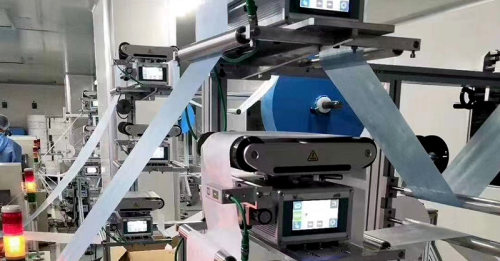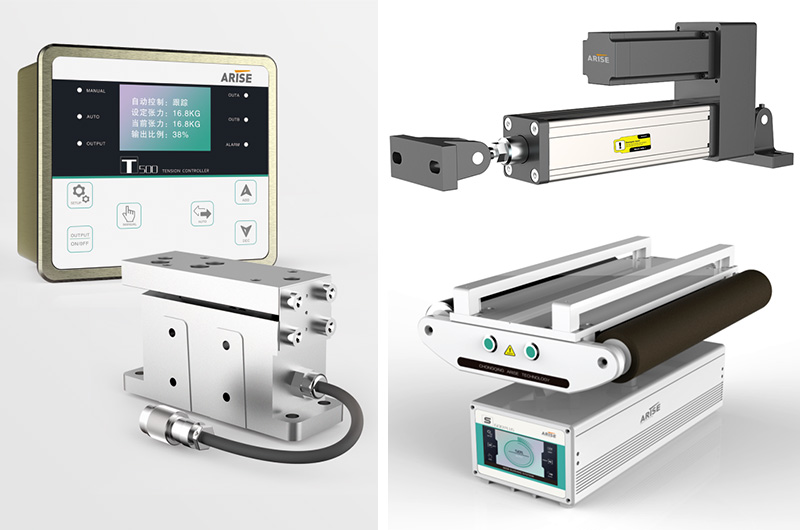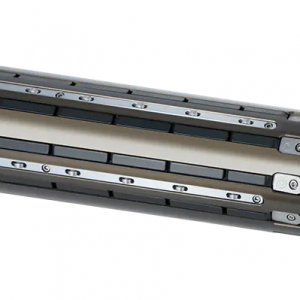The emergence of smart technology has revolutionized traditional web guide systems, paving the way for the advent of smart web guide systems. These sophisticated systems, driven by artificial intelligence (AI) and automation, mark a groundbreaking shift towards unparalleled accuracy, adaptability, and efficiency in web guiding within modern manufacturing. Let's explore the intricacies of smart web guide systems and their transformative impact on the manufacturing landscape.

Key Techniques of Smart Web Guide Systems:
Harnessing Artificial Intelligence: Smart web guide systems leverage AI to enable robots to learn from data, adapt to changing conditions, and autonomously make decisions. By analyzing real-time sensor data, AI algorithms detect web alignment errors and automatically adjust guide mechanisms, ensuring precise alignment and minimizing waste and downtime.
Adaptive Machine Learning: These systems utilize adaptive machine learning algorithms to continuously improve performance. By studying past data and user feedback, smart web guide systems adjust guide settings to accommodate different materials, speeds, and environmental conditions, optimizing performance with minimal manual intervention.
Predictive Analytics for Proactive Maintenance: Smart web guide systems excel in anticipating and preventing maintenance issues before they arise. By monitoring sensor data and equipment performance parameters, predictive analytics algorithms forecast maintenance needs, enabling operators to take preemptive action and minimize unplanned downtime.
Real-Time Monitoring and Optimization: Providing real-time monitoring of web alignment and tension, smart web guide systems offer operators valuable insights into process performance. With advanced visualization tools and dashboards, operators can monitor system status and make informed decisions while real-time optimization algorithms adjust guide settings for maximum efficiency.
Enhanced Integration and Connectivity: In the era of Industry 4.0, connectivity and integration are paramount. Smart web guide systems seamlessly integrate with existing production equipment and enterprise systems, enabling end-to-end visibility and control to optimize workflow efficiency.
Advanced Control Algorithms: Utilizing advanced control algorithms such as PID controllers and MPC, smart web guide systems ensure precise adjustment of guide mechanisms for optimal performance based on sensor data and feedback mechanisms.
Human-Machine Interface (HMI): Intuitive user interfaces and visualization tools empower operators to effectively monitor and manage web guiding processes, with features including dashboards, alerts, and diagnostic tools.
Energy Efficiency Optimization: Smart web guide systems prioritize energy efficiency through the integration of energy-efficient components and optimization techniques, minimizing energy consumption while maintaining precise web control.
Fault Tolerance and Redundancy: Employing fault-tolerant design principles and redundancy mechanisms, these systems ensure reliability and uptime, with redundant sensors, actuators, and control circuits minimizing the risk of production interruptions.
Remote Monitoring and Diagnostics: Remote accessibility enables operators to monitor and monitor and troubleshoot web guiding systems from any location, facilitating proactive maintenance and optimization of web guiding processes.

Benefits of Smart Web Guide Systems:
Precision and Accuracy: Ensures consistent web alignment and tension control.
Efficiency and Productivity: Minimizes waste, downtime, and manual intervention, enhancing productivity.
Operator Convenience: User-friendly interfaces simplify operation and monitoring.
Adaptability and Flexibility: Responds to changing production requirements in real-time.
Conclusion:
Smart web guide systems represent a significant advancement in web guiding technology, offering unparalleled precision, efficiency, and automation. As smart manufacturing continues to evolve, these systems will play a crucial role in driving innovation and competitiveness across various industries.






